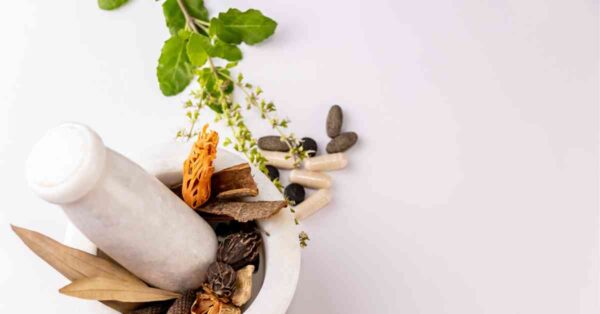Are you searching for a natural way to alleviate pain and discomfort? Look no further! Ayurvedic pain relief offers a practical and holistic solution to your pain-related concerns. This ancient practice aims to harmonize your body, mind, and spirit to help you achieve overall well-being. Let’s explore what Ayurvedic pain relief is, how it works, and how to get started with this time-tested approach.
What is Ayurvedic Pain Relief?
Ayurveda, a 5,000-year-old system of natural healing, originated in India and has been used for hudreds of years to help treat a wide range of health issues, including chronic pain. Ayurvedic pain relief focuses on balancing the three fundamental energies or doshas (Vata, Pitta, and Kapha) within your body, which helps alleviate pain and promote overall health.
How Ayurvedic Pain Relief Works
Ayurvedic pain relief works by targeting the root cause of pain, which is often an imbalance in the doshas. Various treatments and therapies can help restore balance, such as herbal remedies, massage, meditation, and yoga. For example, research suggests that certain Ayurvedic herbs, like turmeric and ashwagandha, have potent anti-inflammatory and pain-relieving properties. Additionally, studies have shown that practicing yoga can improve chronic pain symptoms and enhance overall well-being.
How to Start Ayurvedic Pain Relief
To begin your journey toward Ayurvedic pain relief, follow these steps:
- Consult an Ayurvedic practitioner: A qualified practitioner can assess your unique body constitution, identify the cause of your pain, and recommend specific treatments tailored to your needs.
- Incorporate Ayurvedic herbs: Use herbal remedies as directed by your practitioner, such as turmeric, ginger, or ashwagandha, which can help reduce inflammation and alleviate pain.
- Practice yoga and meditation: Incorporate daily yoga and meditation routines to help balance your doshas, manage stress, and promote overall well-being.
- Adopt a balanced diet: An Ayurvedic diet tailored to your dosha type can help maintain optimal health and reduce pain. Consult your practitioner for dietary recommendations.
- Embrace Ayurvedic lifestyle practices: Implement daily routines, like abhyanga (self-massage with warm oil), to support overall health and enhance pain relief.
- Try Ayurvedic massage: Abhyanga, a traditional Ayurvedic oil massage, can help relieve pain, promote relaxation, and stimulate circulation.
What are common ayurvedic medicines and herbs?

Ayurvedic medicines and supplements are derived from herbs, plants, minerals, and other natural sources.
These remedies aim to balance the doshas and promote overall health and well-being. Some common Ayurvedic medicines and supplements include:
- Ashwagandha (Withania somnifera): An adaptogenic herb used for reducing stress, anxiety, and fatigue, as well as improving overall vitality and strength.
- Triphala: A combination of three fruits (amla, bibhitaki, and haritaki) that is known for its detoxifying and rejuvenating properties. It is used to support digestion and maintain regular bowel movements.
- Turmeric (Curcuma longa): A potent anti-inflammatory and antioxidant herb, often used for its pain-relieving properties and to support the immune system.
- Brahmi (Bacopa monnieri): A memory-enhancing herb commonly used to improve cognitive function, reduce stress, and support overall brain health.
- Shatavari (Asparagus racemosus): A rejuvenating herb for women, often used to support reproductive health, balance hormones, and reduce stress.
- Guggul (Commiphora mukul): A resin extract utilized for its anti-inflammatory and cholesterol-lowering properties. It supports joint health and cardiovascular health.
- Neem (Azadirachta indica): Neem oil has antibacterial, antifungal, and anti-inflammatory properties; neem supports skin health and manages various skin conditions.
- Licorice (Glycyrrhiza glabra): licorice supports digestive health, soothes coughs and sore throats, and manages stress.
- Amalaki (Emblica officinalis): A powerful antioxidant herb that supports immune system function, digestion, and overall vitality.
- Arjuna (Terminalia arjuna): Arjuna has cardioprotective properties; arjuna supports heart health, blood pressure regulation, and overall cardiovascular health.
What are some of the standard therapies of the ayurvedic approach?

Here are some additional aspects of Ayurvedic pain relief:
- Marma therapy: Marma points are vital energy points in the body where the life force, or prana, is concentrated. Marma therapy involves the gentle stimulation or massage of these points to release blocked energy, reduce pain, and promote healing. This therapy can be combined with aromatherapy and herbal oils for enhanced effects.
- Panchakarma: Panchakarma is a detoxification and rejuvenation process in Ayurveda with five therapeutic actions. These actions help cleanse the body of toxins, balance the doshas, and alleviate pain. Panchakarma can include treatments such as oil massages, steam therapy, enemas, and nasal cleansing.
- Snehana and Swedana: Snehana (oleation therapy) and Swedana (sweating or fomentation therapy) are often used together to alleviate pain and stiffness. Snehana involves the external or internal application of medicated oils or ghee, while Swedana uses heat and steam to induce sweating. These therapies help increase circulation, reduce inflammation, and promote the elimination of toxins.
- Ayurvedic pain-relieving balms and ointments: Topical Ayurvedic formulations, such as balms and salves, can relieve localized pain. These products often contain analgesic, anti-inflammatory, and soothing herbal ingredients, such as eucalyptus, camphor, and menthol.
- Specific Ayurvedic treatments for pain relief: There are specialized Ayurvedic treatments targeting particular types of pain, such as Kati Basti (for lower back pain), Greeva Basti (for neck pain), and Janu Basti (for knee pain). These treatments involve creating a dough barrier around the affected area and filling it with warm, medicated oil to provide localized relief.
- Personalized approach: Ayurveda emphasizes the importance of a customized approach to pain relief, as each individual has a unique constitution and imbalances. Therefore, the most effective Ayurvedic pain relief plan is customized to your needs and health conditions.
Things to Consider Before Attempting Ayurvedic Pain Relief
Before trying Ayurvedic pain relief, keep the following in mind:
- Consult your healthcare provider: Always talk to your healthcare provider before starting any new treatment, as some Ayurvedic practices may not suit everyone.
- Choose a qualified practitioner: Ensure that the Ayurvedic practitioner you consult is well-trained and experienced to provide the best guidance and recommendations.
- Be patient: Ayurvedic treatments may take time to show results as they work on addressing the root cause of pain. Give yourself adequate time to experience the benefits.
Who Should Not Try Ayurvedic Pain Relief
Although Ayurvedic pain relief is generally safe, some individuals should avoid specific treatments:
- Pregnant or nursing women: Some Ayurvedic herbs and treatments are not recommended during pregnancy or breastfeeding. Consult your healthcare provider before attempting any Ayurvedic practices.
- Those with specific medical conditions: People with certain medical conditions or allergies may need to avoid particular herbs or treatments. Always consult your healthcare provider and an Ayurvedic practitioner for personalized guidance.
Conclusion
In conclusion, Ayurvedic pain relief offers a natural, holistic approach to managing pain and promoting overall well-being. By addressing the root cause of pain and balancing the body’s energies, Ayurveda can help alleviate discomfort and improve your quality of life. Consult a qualified practitioner and embrace the Ayurvedic lifestyle to start experiencing the benefits of this ancient healing system.
Find more stories on the blog.
References:
- National Center for Complementary and Integrative Health. (2019). Ayurvedic Medicine: In Depth. Retrieved from https://www.nccih.nih.gov/health/ayurvedic-medicine-in-depth
- Lad, V. (2002). Textbook of Ayurveda: Fundamental Principles of Ayurveda. Albuquerque, NM: Ayurvedic Press.
- National Institutes of Health. (2012). Yoga for Health. Retrieved from https://www.ncbi.nlm.nih.gov/pmc/articles/PMC3415184/
- Aggarwal, B. B., Sundaram, C., Malani, N., & Ichikawa, H. (2007). Curcumin: the Indian solid gold. Advances in Experimental Medicine and Biology, 595, 1-75. doi: 10.1007/978-0-387-46401-5_1. Retrieved from https://link.springer.com/chapter/10.1007/978-0-387-46401-5_1
- Cramer, H., Lauche, R., Haller, H., & Dobos, G. (2013). A systematic review and meta-analysis of yoga for low back pain. Clinical Journal of Pain, 29(5), 450-460. doi: 10.1097/AJP.0b013e31825e1492. Retrieved from https://journals.lww.com/clinicalpain/Abstract/2013/05000/A_Systematic_Review_and_Meta_analysis_of_Yoga_for.8.aspx
- National Ayurvedic Medical Association. (n.d.). How to Choose an Ayurvedic Practitioner. Retrieved from https://www.ayurvedanama.org/choosing-a-practitioner
- Lad, V. (2012). The Complete Book of Ayurvedic Home Remedies. New York, NY: Harmony Books.
- Patwardhan, B. (2014). Bridging Ayurveda with evidence-based scientific approaches in medicine. The EPMA Journal, 5(1), 19. doi: 10.1186/1878-5085-5-19. Retrieved from https://epmajournal.biomedcentral.com/articles/10.1186/1878-5085-5-19
- Dhiman, K., & Gupta, V. K. (2013). Ayurvedic intervention in the management of uterine fibroids: A Case series. Ayu, 34(4), 361-364. doi: 10.4103/0974-8520.127710. Retrieved from https://www.ncbi.nlm.nih.gov/pmc/articles/PMC3950955/




